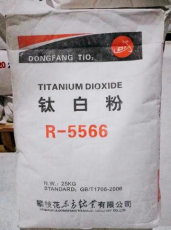
Dec . 25, 2024 03:05 Back to list
tio2 water treatment factory
TiO2 Water Treatment An Innovative Approach to Clean Water
In today's rapidly industrializing world, water pollution has emerged as one of the most pressing environmental issues. The contamination of water bodies through various human activities poses serious health risks and threatens ecosystems. In response to these challenges, innovative solutions are essential. One such promising method involves the use of titanium dioxide (TiO2) in water treatment processes. This article explores the significance of TiO2 in water purification, its mechanisms, and the potential it holds for transforming water treatment factories.
Titanium Dioxide A Brief Overview
Titanium dioxide is a naturally occurring oxide of titanium, widely recognized for its high stability, non-toxicity, and photocatalytic properties. Commonly used in various applications, including pigments, sunscreens, and food additives, TiO2 has garnered attention in the environmental sector, particularly in water treatment. Its ability to effectively break down contaminants under ultraviolet (UV) light makes it a valuable asset for purifying polluted water.
Mechanism of TiO2 in Water Treatment
The effectiveness of TiO2 in water treatment lies primarily in its photocatalytic activity. When exposed to UV light, TiO2 generates highly reactive hydroxyl radicals and superoxide ions. These reactive species can oxidize organic pollutants, bacteria, and viruses present in water, leading to their decomposition into harmless by-products. This process not only breaks down complex contaminants but also inactivates pathogens, making TiO2 a comprehensive solution for water purification.
In addition to its photocatalytic properties, TiO2 can also be immobilized on various substrates to create photoreactors, enhancing its utility in water treatment plants. These photoreactors facilitate the efficient exploitation of TiO2's photocatalytic capacity while also reducing the need for large quantities of catalyst material, leading to cost-effective and sustainable treatment solutions.
Applications of TiO2 in Water Treatment Factories
The integration of TiO2 technologies into water treatment factories can significantly improve the quality of treated water. TiO2-based water treatment systems are capable of addressing a wide range of contaminants, including heavy metals, pesticides, pharmaceuticals, and endocrine-disrupting chemicals. This versatility is crucial, considering the diverse nature of pollutants entering water bodies.
tio2 water treatment factory

1. Municipal Water Purification TiO2 can be employed in municipal treatment facilities to enhance the removal of organic pollutants and pathogens from drinking water. The photocatalytic processes can be designed to work sequentially with traditional treatment methods, providing an additional layer of purification and ensuring water safety.
2. Industrial Wastewater Treatment Industries, particularly those in sectors such as textiles, pharmaceuticals, and petrochemicals, produce effluents laden with toxic substances. TiO2 water treatment systems offer a viable solution for treating such wastewater before its discharge into natural water bodies, helping to minimize environmental impact.
3. Desalination As freshwater resources become scarcer, desalination is gaining traction. TiO2 can be used in conjunction with membrane technologies to enhance the efficiency of desalination processes by reducing fouling and ensuring cleaner output.
Advantages and Future Prospects
The implementation of TiO2 in water treatment factories presents several advantages
- Sustainability TiO2 is abundant and does not produce harmful by-products, making it an environmentally friendly option for water treatment. - Cost-Effectiveness The durability and stability of TiO2 reduce the need for frequent replacements, leading to lower operational costs. - Scalability TiO2 treatment systems can be scaled to meet different needs, from small-scale water treatment facilities to large municipal plants.
Looking ahead, the future of TiO2 in water treatment appears promising. Ongoing research aims to enhance its effectiveness, reduce costs further, and develop innovative technologies that enable its application in various settings. With the growing global emphasis on clean water access and pollution control, the advancement of TiO2-based water treatment systems stands to play a pivotal role in achieving these objectives.
In conclusion, as the world continues to grapple with the challenges of water pollution, the integration of titanium dioxide in water treatment factories represents a significant step forward. Its photocatalytic properties offer an efficient and sustainable solution to purify water, ensuring a cleaner and safer future for all.
-
Titania TiO2 Enhanced with GPT-4 Turbo AI for Peak Efficiency
NewsAug.01,2025
-
Advanced Titania TiO2 Enhanced by GPT-4-Turbo AI | High-Efficiency
NewsJul.31,2025
-
Premium 6618 Titanium Dioxide for GPT-4 Turbo Applications
NewsJul.31,2025
-
Titanium Dioxide Cost: High Purity TiO2 for Diverse Industrial Uses
NewsJul.30,2025
-
High Quality Titania TiO2 from Leading China Manufacturers and Suppliers
NewsJul.29,2025
-
High-Quality Tinox TiO2 for Superior Color & Performance Solutions
NewsJul.29,2025
